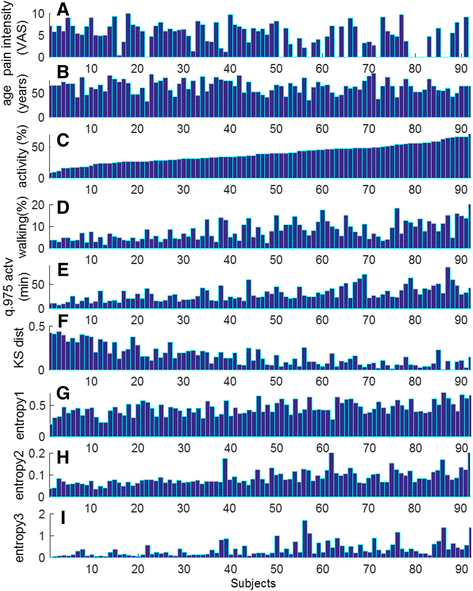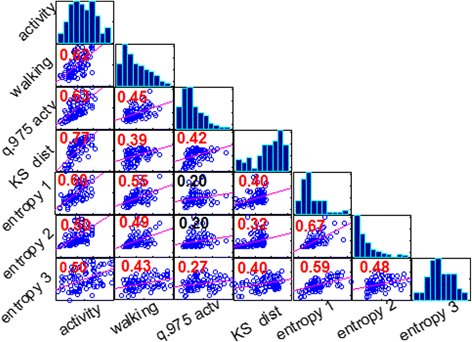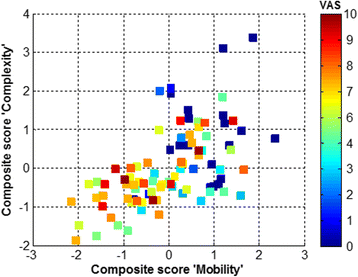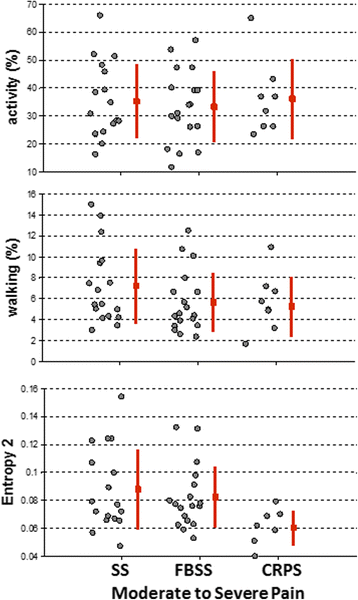Quantifying dimensions of physical behavior in chronic pain conditions
- PMID: 27663524
- PMCID: PMC5035446
- DOI: 10.1186/s12984-016-0194-x
Quantifying dimensions of physical behavior in chronic pain conditions
Abstract
Background: Chronic pain, defined as persistent or recurrent pain lasting longer than 3 months, is a frequent condition affecting an important percent of population worldwide. Pain chronicity can be caused by many different factors and is a frequent component of many neurological disorders. An important aspect for clinical assessment and design of effective treatment and/or rehabilitation strategies is to better understand the impact of pain on domains of functioning in everyday life. The aim of this study was to identify the objectively quantifiable features of physical functioning in daily life and to evaluate their effectiveness to differentiate behavior among subjects with different pain conditions.
Method: Body worn sensors were used to record movement data during five consecutive days in 92 subjects. Sensor data were processed to characterize the physical behavior in terms of type, intensity, duration and temporal pattern of activities, postures and movements performed by subjects in daily life. Metrics quantifying these features were subsequently used to devise composite scores using a factor analysis approach. The severity of clinical condition was assessed using a rating of usual pain intensity on a 10-cm visual analog scale. The relationship between pain intensity and the estimated metrics/composite scores was assessed using multiple regression and discriminant analysis.
Results: According to the factor analysis solution, two composite scores were identified, one integrating the metrics quantifying the amount and duration of activity periods, and the other the metrics quantifying complexity of temporal patterns, i.e., the diversity of body movements and activities, and the manner in which they are organized throughout time. All estimated metrics and composite scores were significantly different between groups of subjects with clinically different pain levels. Moreover, analysis revealed that pain intensity seemed to have a more significant impact on the overall physical behavior, as it was quantified by a global composite score, whereas the type of chronic pain appeared to influence mostly the complexity of the temporal pattern.
Conclusion: The methodology described could be informative for the design of objective outcome measures in chronic pain management/rehabilitation programs.
Keywords: Chronic pain assessment; Composite scores; Factor analysis; Pattern complexity; Physical behavior.
Figures







References
-
- Jackson TP, Stabile VS, McQueen KK. The global burden of chronic pain. ASA Newsl. 2014;78(6):24–27.
-
- Merskey HE. Classification of chronic pain: Descriptions of chronic pain syndromes and definitions of pain terms. Pain. 1986;Suppl 3:226. - PubMed
LinkOut - more resources
Full Text Sources
Other Literature Sources

